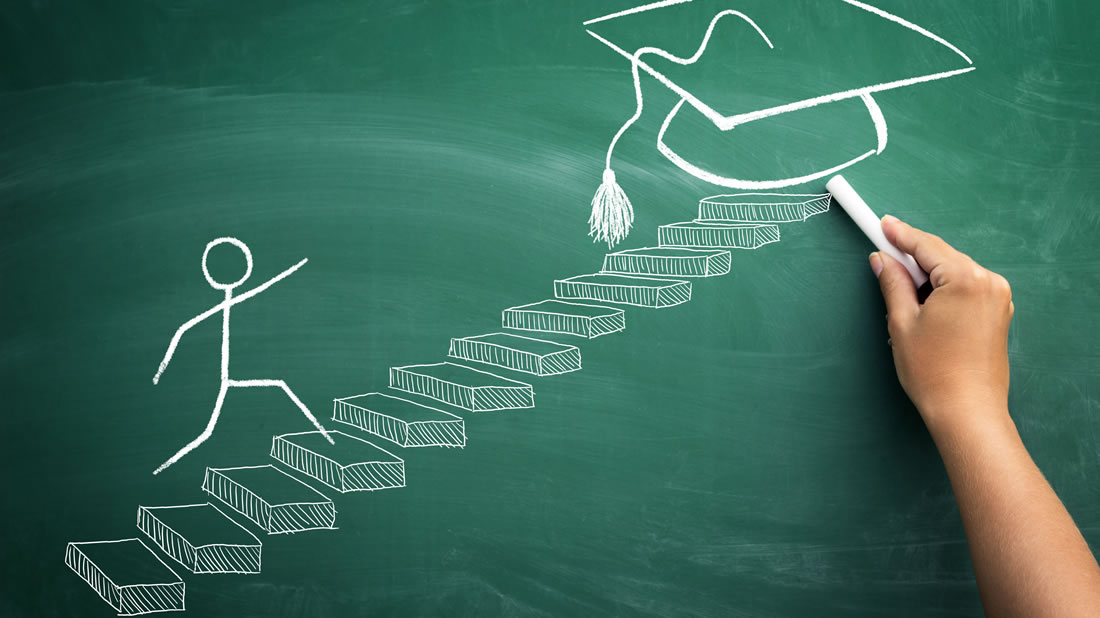11 college and career readiness resources
College and career readiness is of critical importance for all students--here's how to guide them down the right path
College and career readiness should start early to help students develop growth mindsets and outline goals for their personal success. With students coming from different backgrounds and socio-economic situations, one path doesn’t fit all.
College readiness and access is often difficult, and students aren’t always sure how to embark upon their chosen career path. COVID-19 made college and career readiness more complicated for some students who chose to delay their postsecondary plans during the pandemic due to health, safety, family, and financial concerns.
Here are a handful of college and career readiness resources and tools to help educators at all levels inspire their students to pursue their academic and career goals.
1. The nonprofit Council for Aid to Education designs innovative custom assessments that measure the constructs most important to students, educators, and institutions. CAE’s assessments leverage a performance-task model to uniquely measure students’ ability to think critically, solve problems, and effectively communicate. CAE’s data show that 60 percent of students entering college are not proficient in these skills and that these skills are predictive of positive outcomes in college and career.
2. AVID works to close the opportunity gap by preparing all students for college readiness and success in a global society. When schools partner with AVID, they receive professional development, a suite of resources, and ongoing support to ensure a lasting impact that maximizes their return on investment. AVID’s work with schools aligns with their goals to accelerate and enhance the work that is already happening.
3. National PTA offers a look at the components of college and career readiness, including what it means to be a college and career ready high school graduate. The site also offers resources to help students gain the knowledge necessary to confidently transition to the next step in their postsecondary education and career track.
4. The American Institutes for Research works with education and workforce leaders at the state, district, and school levels to refine policies and practices so that students graduate on time with the academic, technical, employability skills they need to be successful in postsecondary education and the workplace.
5. The Alliance for Excellent Education features college and career readiness resources focusing on high school reform, preparing students for 21st-century jobs, rigorous curriculum, career pathways, and more.
6. The Association for Middle Level Education offers resources on college and career readiness for students with special needs. Recommendations include teaching self-advocacy, introducing students and parents to different college types, and focusing on a growth mindset.
7. Take a look at how this New Jersey school district uses four distinct strategies to build and maintain a strong foundation for postsecondary success.
8. The National College Attainment Network offers tools, resources, research, documents, webinars, and more–all focused on making the college success/career intersections more explicit, highlighting successful programs that are already making the college success/career connection, and building capacity to make this pivot smoother.
9. VirtualJobShadow empowers individuals to discover, plan and pursue their dreams with our unique video-based career planning platform. Interactive tools help students and job seekers develop career paths based on choice, not chance. At the elementary level, teachers can inspire their students by broadening their awareness of future career opportunities and engaging them in the process of exploring careers with VJS Junior’s interactive, multimedia lessons. In middle and high school, motivate students to take control of their futures by planning for careers today. Job shadowing and career advice videos take career exploration to a whole new level by connecting academics to the real world.
10. Equal Opportunity Schools aims to ensure that students of color and low-income students have equitable access to America’s most academically intense high school programs and succeed at the highest levels. Each year, approximately three-quarters of a million incoming juniors and seniors are ready to be enrolled in rigorous academic programs, but do not have equitable access to these courses. These students are disproportionately students of color and low-income students. Equal Opportunity Schools helps schools identify and remove barriers to equitable access.
11. What Will They Learn? offers a unique look at college rankings. The search for the right college can be overwhelming. Unfortunately, most rankings don’t tell prospective students what matters most: what students are learning. This resource grades colleges and universities in seven core areas of knowledge.
